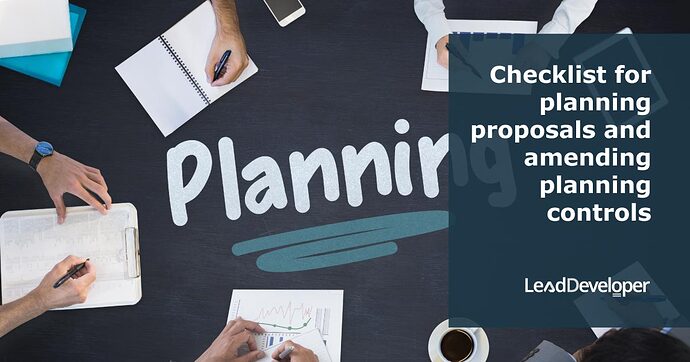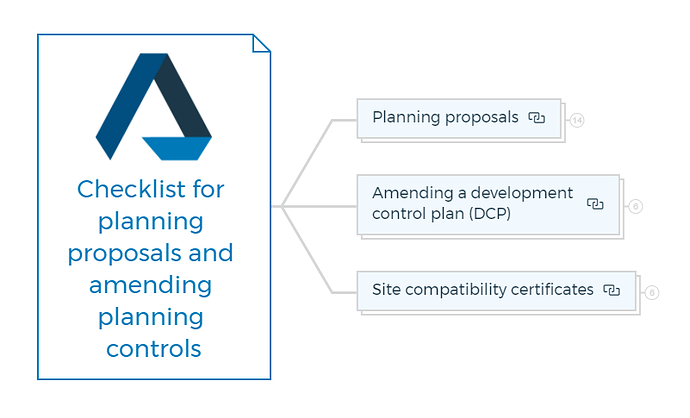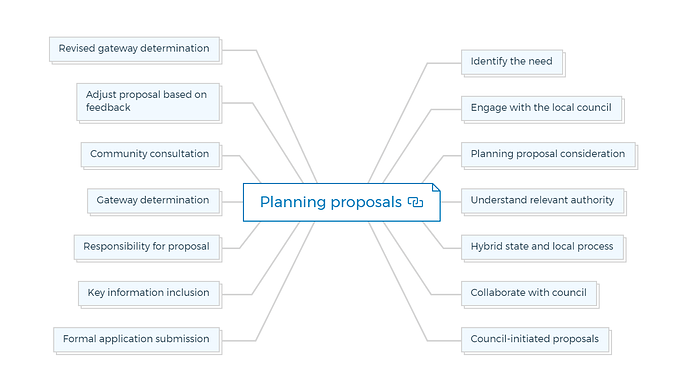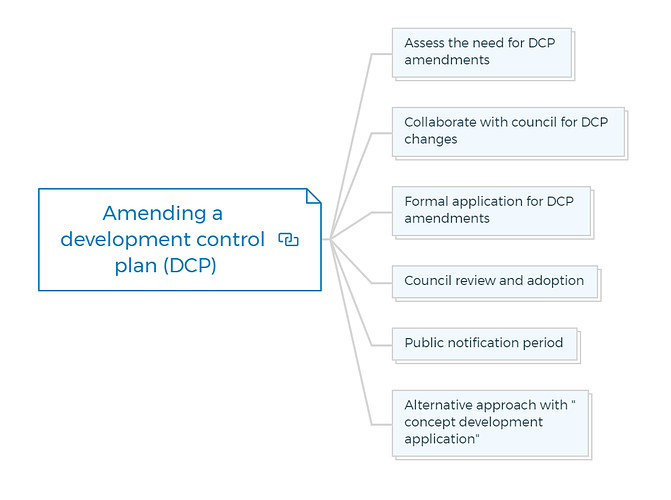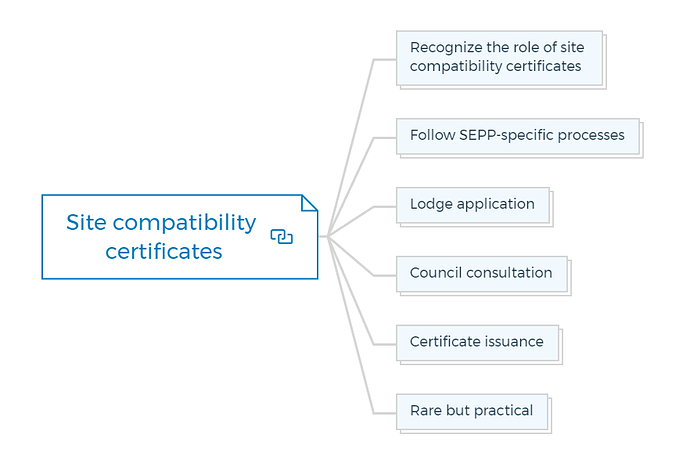Planning proposal and amending planning controls checklist
1. Planning proposals
1.1. Identify the need
- Determine if your development project doesn’t comply with existing planning controls in SEPPs, LEPs, or DCPs.
1.2. Engage with the local council
- Initiate discussions with your local Council to explore potential planning changes.
1.3. Planning proposal consideration
- If required, consider submitting a formal “planning proposal” for changes, either as a private proponent or through the Council.
1.4. Understand relevant authority
- Know the authority responsible for processing planning proposals, including the local Council, the Planning Secretary, or a planning panel.
1.5. Hybrid state and local process
- Recognize that planning proposals involve both state and local government processes due to legal requirements.
1.6. Collaborate with council
- Work closely with your local Council, which may have specific procedures for planning proposals.
1.7. Council-initiated proposals
- Be aware that Councils themselves may initiate planning proposals for various reasons.
1.8. Formal application submission
- Submit a formal planning proposal application to the relevant authority, usually including an application fee and specific information requirements.
1.9. Key information inclusion
- Ensure your planning proposal includes:
- Objectives or intended outcomes.
- Explanation of proposed changes.
- Justification for changes and alignment with local planning strategies.
- Relevant maps, if applicable.
- Details of planned community consultations.
1.10. Responsibility for proposal
- Depending on the situation, you or the Council may prepare the required information for the proposal.
1.11. Gateway determination
- Understand that a planning proposal proceeds to a “gateway determination” stage after preparation.
1.12. Community consultation
- Prepare for a community consultation period. Usually at least 28 days, but can vary.
1.13. Adjust proposal based on feedback
- Be prepared to modify your proposal based on feedback from community consultation or other reasons.
1.14. Revised gateway determination
- Further community consultation may be required if directed by the Minister under a revised gateway determination.

Learn More
2. Amending a development control plan (DCP)
2.1. Assess the need for DCP amendments
- Consider amending a DCP if your project requires specific and detailed controls not typically found in environmental planning instruments.
2.2. Collaborate with council for DCP changes
- Discuss the proposed DCP amendments with the local Council, which often has the authority to amend DCPs.
2.3. Formal application for DCP amendments
- If the Council accepts your proposal, they may request a formal application for DCP amendments.
2.4. Council review and adoption
- The Council will review the proposed DCP amendments and resolve to formally adopt them, with or without them.
2.5. Public notification period
- Be aware that there is typically a mandated 28-day public notification period for DCP amendments under the EP&A Act.
2.6. Alternative approach with “concept development application”
- You can also amend a DCP by lodging a “concept development application.”

 You are missing out if you haven’t yet subscribed to our YouTube channel.
You are missing out if you haven’t yet subscribed to our YouTube channel.
3. Site compatibility certificates
3.1. Recognize the role of site compatibility certificates
- Understand that site compatibility certificates allow specific developments not permitted under zoning with consent, subject to obtaining a certificate from the Department of Planning, Industry and Environment.
3.2. Follow SEPP-specific processes
- Note that the process for obtaining site compatibility certificates is outlined in SEPPs and may vary between them.
3.3. Lodge application
- Prepare and lodge an application with the Department of Planning, Industry and Environment, following the specified forms, required documents, and application fee.
3.4. Council consultation
- The Department may notify the local Council and seek their comments on your application.
3.5. Certificate issuance
- Understand that the certificate does not guarantee approval of a Development Application but provides an alternative route for certain developments.
3.6. Rare but practical
- Acknowledge that applications for site compatibility certificates are relatively rare but can be practical, particularly for specific developments, such as Seniors SEPP developments on rural land adjoining urban areas.
You are missing out if you haven’t yet subscribed to our YouTube channel.
